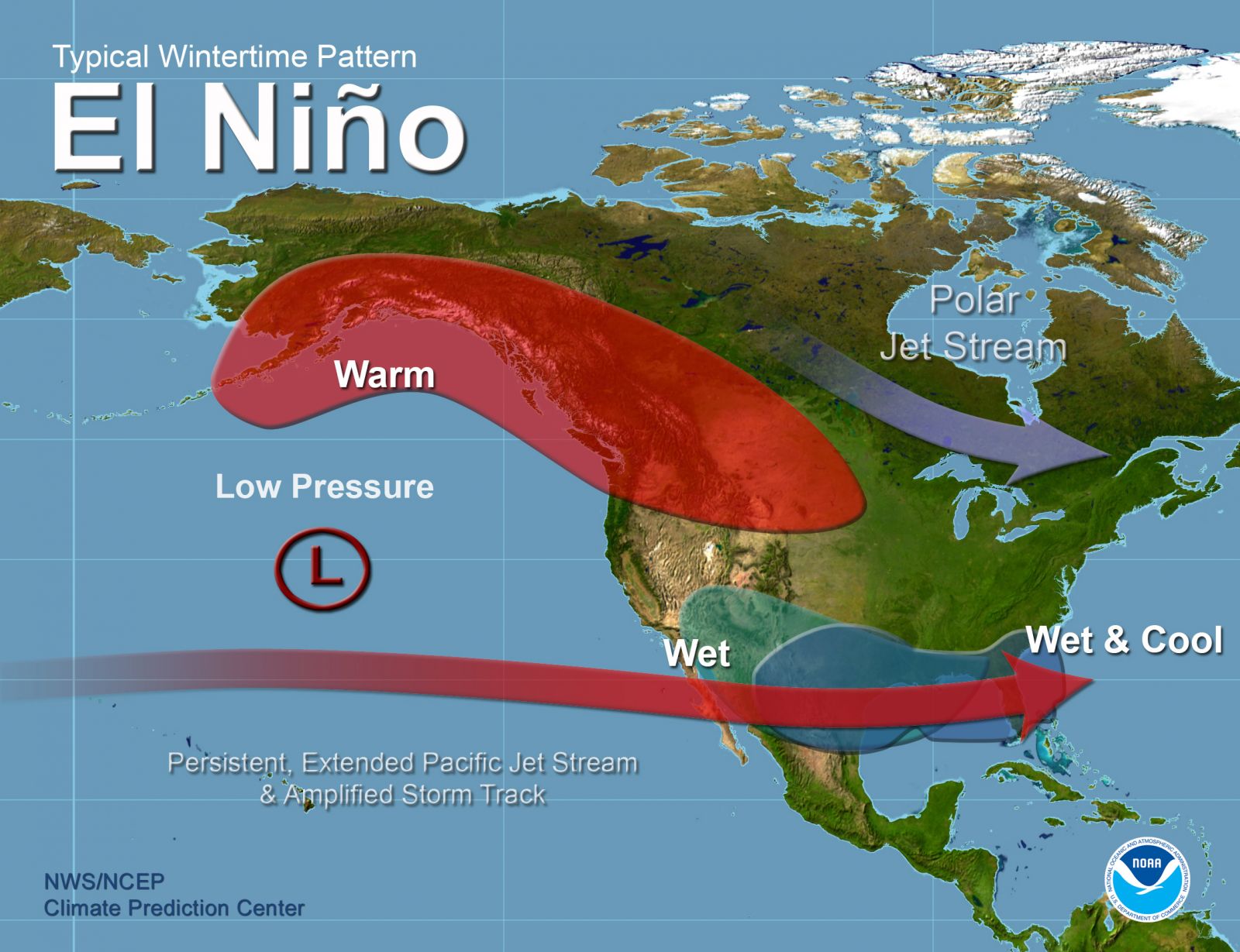“Climate’s capacity to inflict misery rises steeply when imperial arrogance and ideology hinder a society’s adjustments to extreme weather.”
Eugene Linden – The Winds of Change
Four years into persistent drought, California is now being told an El Niño is forming in the Pacific, and moreover that it appears to be among the strongest ever. While initially this may appear to be good news portending copious rainfall for our dry state, upon deeper examination the reality of a powerful El Niño should give California and the rest of the world pause.
Climate change is not a recent phenomenon, though global warming caused by the burning of fossil fuels is entirely modern. Looking back prior to our industrial age reveals earth’s dramatic history of periodic climate change, none of which was the result of human activity. A variety of scientifically collected and analyzed records including ice cores, sediment samples, radiological analysis, and geologic excavations reveal that in the past 10,000 years alone tremendous climate oscillations have taken place. 4,200 years ago, for example, centuries-long El Niño -like climate disruption set off a cascade of famine which collapsed entire civilizations.
Planetary climate change – cooling, warming, storminess and periods of relative a calm – all occur at varying intervals as a result of factors as diverse as the flattening and rounding of earth’s orbit and distance from the sun, shifts back and forth in its angle of axis from 22 to 24 degrees, sun spot activity, volcanic activity, changes in atmospheric and oceanic flow, formation of ice sheets, and feedback responses to each and any of these influences. Earth’s climate is constantly changing subject to both short-term and long term events.
Climate history corresponds to the biological history of life on our planet. Adaptation to climate change drives natural selection and creates conditions for both the arising of new species and the demise of old. Lacking such environmental change, the engine of life’s diversity would have been far slower.
While we in California may view the formation of the El Niño with a sense of relief, the rest of the world may justly anticipate it with fear and trepidation. An El Niño is a global event triggered by deep heating of surface waters in the Pacific Ocean, which itself spans over 11,000 miles. Accordingly, though El Niño brings rain to California it also causes severe drought, extreme weather events and severe flooding globally. Worldwide, the El Niño of 1997-99 caused over 100-billion dollars in damage and many thousands of flood-related deaths. Though generally short-term in scale, a strong El Niño nonetheless subjects millions of people to its far-reaching effects.
The current drought reveals our disposition to ignore the historic and now documented reality of climate variability; rather than planning properly for periods of low precipitation we have foolishly wasted water, behaving as if it would always be in abundance. Now, faced with the prospects of a wet winter fueled by El Niño, we’re foolishly placing hopes of salvation in the complex vagaries of nature.
Our rain and snow shortfall has lasted four years, but periods of serious drought have been far longer; the analysis of climate indicators document drought lasting 300 years. Accordingly, one seasonal El Niño will not save us from our arrogance, nor will nature protect us. Rather, our survival depends upon deep, systemic change in our attitudes and actions.
